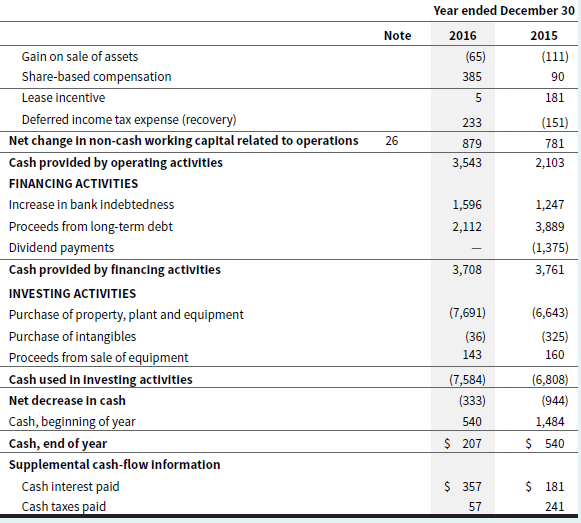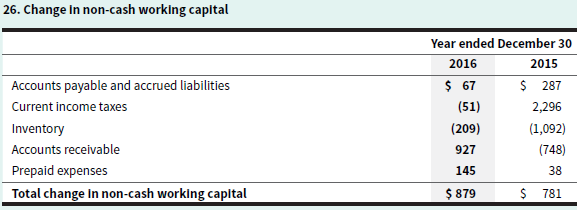The consolidated statements of cash flows and related note disclosure for Big Rock Brewery Inc. are in
Question:
The consolidated statements of cash flows and related note disclosure for Big Rock Brewery Inc. are in Exhibits 5.22A and 5.22B.
EXHIBIT 5.22A Big Rock Brewery Inc.’s 2016 Consolidated Statements of Cash Flows


EXHIBIT 5.22B Excerpt from Big Rock Brewery Inc.’s 2016 Annual Report

Required
a. In total, how much did Big Rock’s cash and cash equivalents change during 2016? Was this an increase or a decrease? How did this compare with the previous year?
b. How did Big Rock’s net income in 2016 compare with the cash flows from operating activities? What was the largest difference between these two amounts?
c. What effect did the change in the company’s accounts receivable have on cash flows from operating activities in 2016? What does this tell you about the balance owed by the company’s customers?
d. What effect did the change in the company’s accounts payable and accrued liabilities have on cash flows from operating activities in 2016? What does this tell you about the balance owed to these creditors?
e. Calculate Big Rock’s net free cash flow for 2016 and 2015. Is the trend positive or negative?
f. How did the dividends paid by Big Rock to its shareholders compare with the company’s net income and cash flows from operating activities?
g. If you were a user of Big Rock’s financial statements—a banker or an investor—how would you interpret the company’s cash flow pattern? How would you assess the risk of a loan to or an investment in Big Rock? Do you think the company is growing rapidly?
Accounts PayableAccounts payable (AP) are bills to be paid as part of the normal course of business.This is a standard accounting term, one of the most common liabilities, which normally appears in the balance sheet listing of liabilities. Businesses receive... Accounts Receivable
Accounts receivables are debts owed to your company, usually from sales on credit. Accounts receivable is business asset, the sum of the money owed to you by customers who haven’t paid.The standard procedure in business-to-business sales is that... Free Cash Flow
Free cash flow (FCF) represents the cash a company generates after accounting for cash outflows to support operations and maintain its capital assets. Unlike earnings or net income, free cash flow is a measure of profitability that excludes the...
Step by Step Answer:

Understanding Financial Accounting
ISBN: 9781119406921
2nd Canadian Edition
Authors: Christopher D. Burnley





